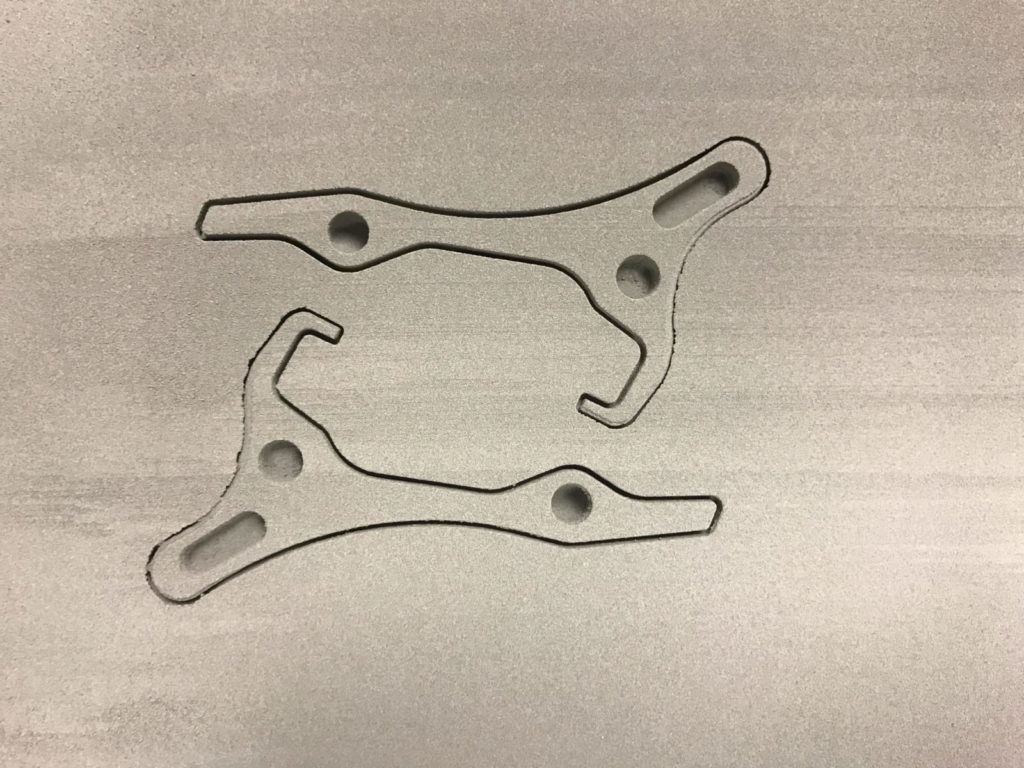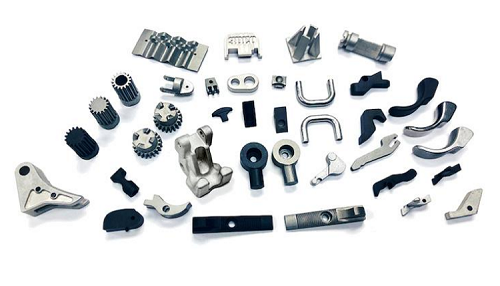There continue to be new approaches to metal additive manufacturing (AM), but 3DEO is one of the few that applies what might be called a “binder spraying” technique to metal 3D printing. Unlike binder jetting, the printers do not use inkjet to deposit binder. As a result, it has a very unique offering for the general market. For this reason, the California-based startup has been careful in its go-to-market strategy.
The latest move has been to move away from general manufacturing, alongside AM, in favor of a greater dedication to 3D printing. This includes a new design for AM (DfAM) service, with which 3DEO aids customers in identifying, designing, and producing parts with its Intelligent Layering metal 3D printing process. We spoke to 3DEO President Matt Sand to learn more.
From AM Service to DfAM Service
3DEO’s Intelligent Layering process, as deployed in its “Saffron” 3D printer, sees a thin layer of metal powder spread across a bed before a binder is sprayed with a proprietary spray mechanism across the entire build area. A CNC mill then traces the outline of the part and any internal features. The completed green-state object is sintered in a furnace to achieve full density.
To get the novel Intelligent Layering technology off the ground, 3DEO began as a part service, producing up to 150,000 pieces per year. It found a sweet spot in competing with CNC machining and metal injection molding (MIM). The company would receive drawings and CAD models that were too difficult or costly for CNC or that lacked the volumes to justify MIM. After all, a mold for MIM would require an investment of anywhere from $25,000 to $125,000, not to mention the six to nine months to receive the parts.
In the process of developing closer relationships with these clients over the years, a common trend emerged in which clients would attempt to improve the performance or functionality of their components by taking advantage of the design possibilities of AM. However, because most of these firms were mid-sized, earning $10 million to $1 billion in revenues, they lacked the design engineering teams necessary to perform advanced redesigns for additive manufacturing. For that reason, 3DEO opted to launch its own design and engineering services to help customers take full advantage of the geometric freedom of 3D printing.
“When you’re competing with CNC machining and MIM production, you’re really coming in on the tail end of the product development lifecycle. By adding the design engineering services on the front end, we can help customers end to end, from the initial ideation stage through to scale production,” Sand told 3DPrint.com “Customers have a product idea. They know what it needs to accomplish in the application. We can show them how they can leverage 3DEO’s technology and AM to build it to make a highly differentiated, premium product. So, we’ve rebuilt the team with this new vision in mind.”
In the past, customers would come to 3DEO with a bundle of parts, only some of which would be ideal for 3D printing and others that might be better suited for CNC. In turn, 3DEO would actually end up making all of them, including machined items. Now, as part of its new service offering, the company sold off some of its CNC machines and older furnaces, making room for new upgrades and abandoning the CNC side business.
Intelligent Layering for Small and Mid-Sized Businesses
One of the key benefits it offers compared to binder jet is that the tolerances of Intelligent Layering are much tighter, achieving +/- 0.003” to .004”, compared to the +/- .010” to .025” of binder jet. This is essential, given the fact that the general tolerances expected in manufacturing are typically around +/- .005”. Statistically, this means that a tolerance of .010 will result in half of the parts not meeting specifications. Multiply this across 10 dimensions and only a tiny fraction of parts will be in spec.
 Metal parts that have been CNC’d during the Intelligent Layering process. Image courtesy of 3DEO.
Metal parts that have been CNC’d during the Intelligent Layering process. Image courtesy of 3DEO.Though laser powder bed fusion (L-PBF) is able to achieve high tolerances, it is a notoriously costly technology. By achieving such tight tolerances, 3DEO is able to increase its yields, driving costs down to the point where the company is able to compete with CNC and MIM. For this reason, Sand believes that Intelligent Layering produces the best surface finishes in the industry, as well as exceptional material properties.
“As amazing as L-PBF technology is, I don’t see a way to get the cost of L-PBF down because, even if you increase throughput as an attempt to reduce the cost of the part, it really increases the cost of the machine dramatically,” Sand explained. “A part that might cost our customer $5 might cost anywhere from $50 to a $100 with L-PBF. That pretty quickly prices L-PBF out of most production conversations. For space and exotic aerospace, hip and knee implants, PBF is very interesting and that’s where you see a lot of the traction. But, when it comes to industrial markets, price sensitivity is a real thing.”
With all of this in mind, 3DEO is able to service smaller manufacturers and low-cost parts in a way that other firms can’t. Its design and engineering services further allow the company to collaborate with their customers to scale their 3D printed products to mass production.
 Parts made with Intelligent Layering. Image courtesy of 3DEO.
Parts made with Intelligent Layering. Image courtesy of 3DEO.One example of such a partnership has been with a $300 million medical product company focused on minimally invasive surgical devices. The client is betting its next generation of end effectors on 3DEO’s Intelligent Layering. Even a single millimeter for laparoscopic surgery makes a huge difference. With 3D printing, the company is able to pack greater complexity and functionality into the distal tip of the surgical device.
Sand also suggests that Intelligent Layering is increasingly competing with a manufacturing process the company previously hadn’t targeting: investment casting. Due in part to supply chain issues and significant post-processing requirements, aerospace customers are coming to 3DEO to make parts that don’t require any additional machining.
“Some of our aerospace customers have really significant non-destructive testing yield loss associated with investment casting,” Sand said. “One customer tells us that, for every three parts in investment casting that they order, only one of those parts passes their non-destructive testing.”
Being located at the center of Los Angeles’s aerospace and defense hub, 3DEO has the opportunity to work with a number of customers in the space. For one client, the company was able to redesign a legacy ball-nut part to create a frictionless linear ball screw with extremely tight inner diameter tolerances. The redesign was almost shelved when other production technologies were considered, but Intelligent Layering was ultimately able to realize the concept. Whereas the predecessor was burning out at 10,000 cycles, the 3D printed counterpart has survived more than 20,000.
The Future for 3DEO
One of the most unique aspects of 3DEO’s business model has been to deploy its technology as a service, rather than selling its equipment on the market. Since the firm launched in 2016, we’ve seen other novel metal AM startups follow the same strategy, most notably Seurat and VulcanForms. Now that the company has been running this way for more than half-a-decade, including 19 previous generation machines alongside 25 of its latest Saffron systems, 3DEO may be ready to deploy 3D printers to its customers.
The aforementioned medical manufacturer is one potential customer. If such a client does rely on Intelligent Layering for its manufacturing, it will need to ensure that it can continue to produce its goods with or without 3DEO. However, the company doesn’t yet see much urgency on its end to begin building its machines for outside deployment.
“I think it’s inevitable that, at some point, we sell manufacturing cloud capability to strategic partners or to the public at large. Right now, we are enjoying such strong demand at this point without necessarily burdening ourselves with the idea of deploying our manufacturing cloud to other locations,” Sand said. “However, jointly owned or customer-owned, there is a future where we have distributed manufacturing capabilities spread around the globe.”
3DPrint.com and SmarTech Analysis are hosting Additive Manufacturing Strategies in New York City on February 7-9, 2023. Register for the event here to learn from and network with the most exciting companies and individuals in AM.
Subscribe to Our Email Newsletter
Stay up-to-date on all the latest news from the 3D printing industry and receive information and offers from third party vendors.
Print Services
Upload your 3D Models and get them printed quickly and efficiently.
You May Also Like
Consolidation in AM: How 2025 Is Shaping the Industry’s New Normal
The first half of 2025 has been marked by a clear shift in the additive manufacturing (AM) industry. Companies are no longer just focused on developing new tech by themselves....
Etsy Design Rule Change Reduces Selection of 3D Printed Goods
Online marketplace Etsy has implemented a rule change requiring all 3D printed goods on the site to be original designs. The update to the site’s Creativity Standards states, ¨Items produced using...
U.S. Congress Calls Out 3D Printing in Proposal for Commercial Reserve Manufacturing Network
Last week, the U.S. House of Representatives’ Appropriations Committee moved the FY 2026 defense bill forward to the House floor. Included in the legislation is a $131 million proposal for...
Transforming From Tourist to Native: Duro CEO Michael Corr Explains Why the Company Rebuilt its PLM Software on AI
In these early innings of the AI boom, many market analysts have expressed concern that AI spend has gotten too far ahead of the technology’s proven ability to deliver significant...
































